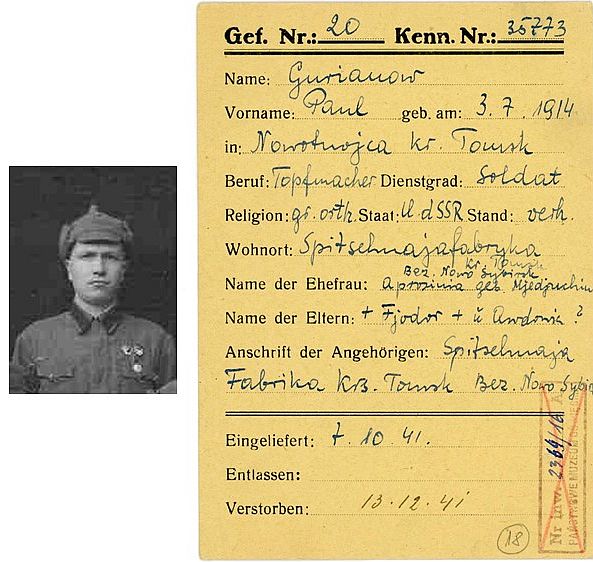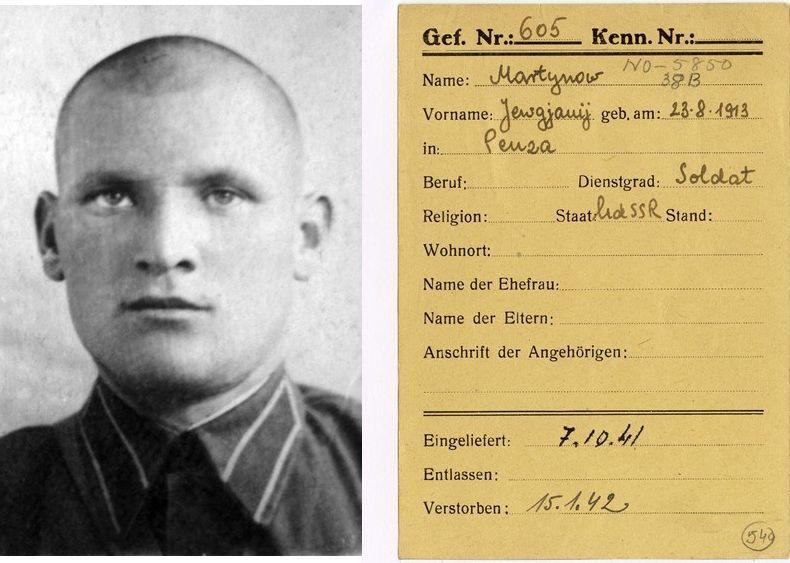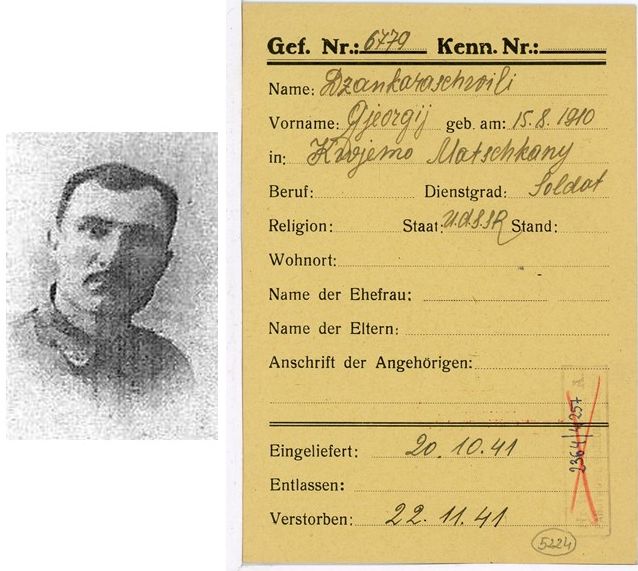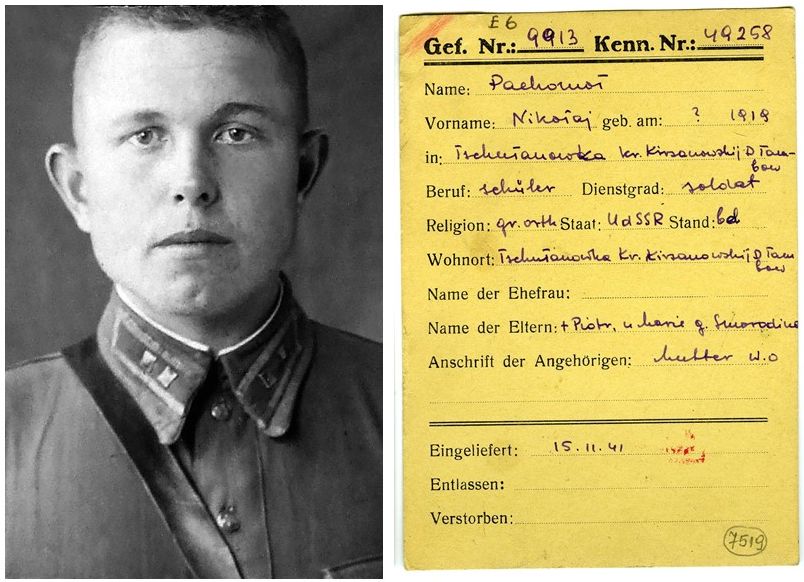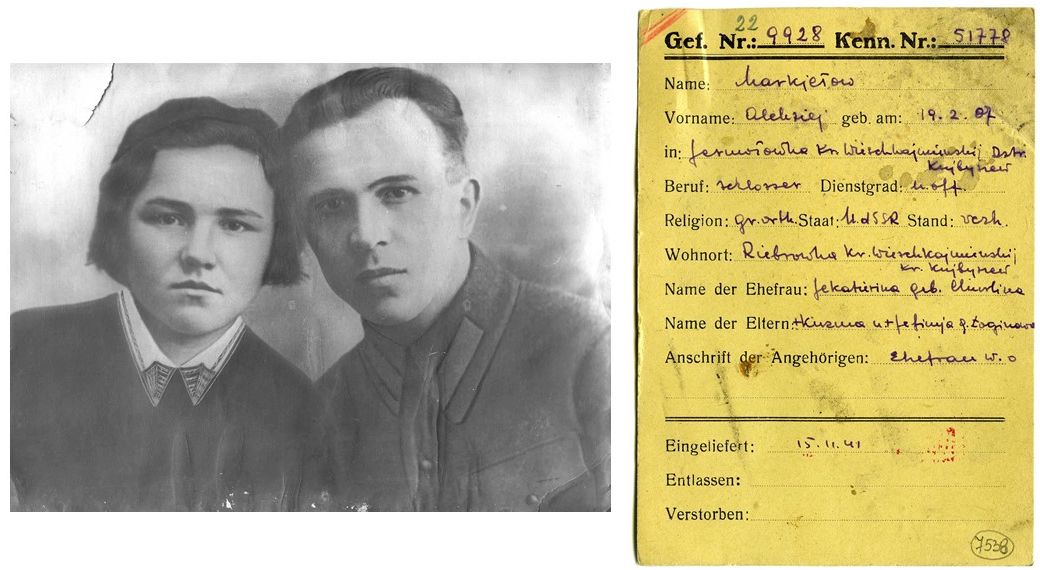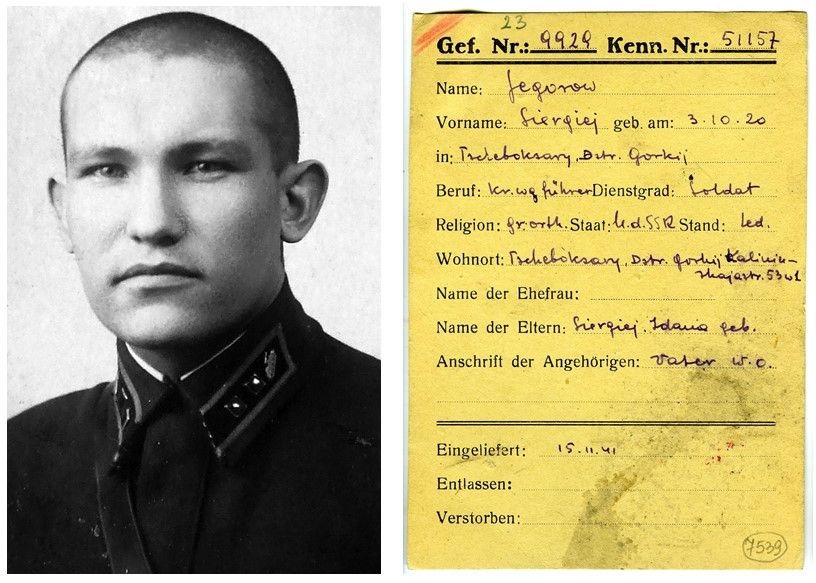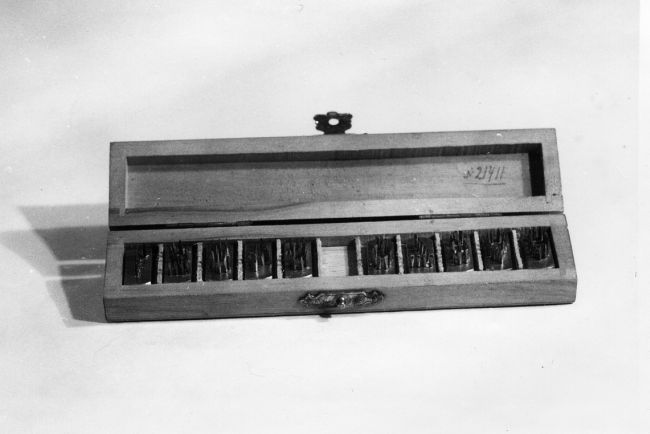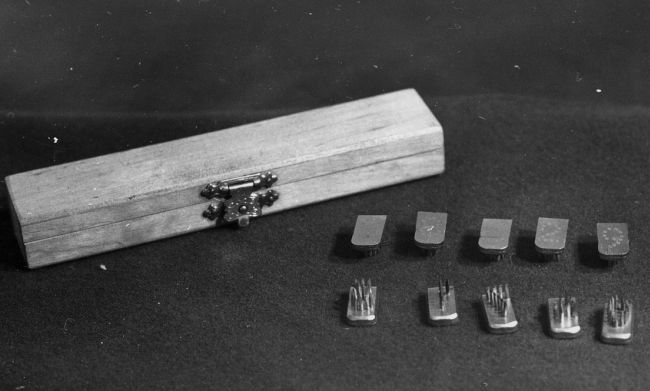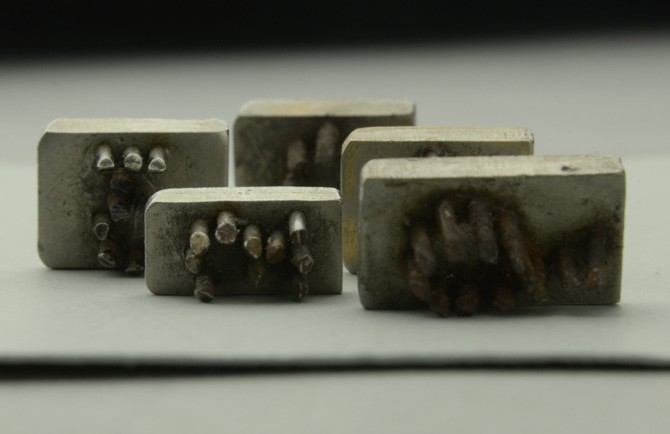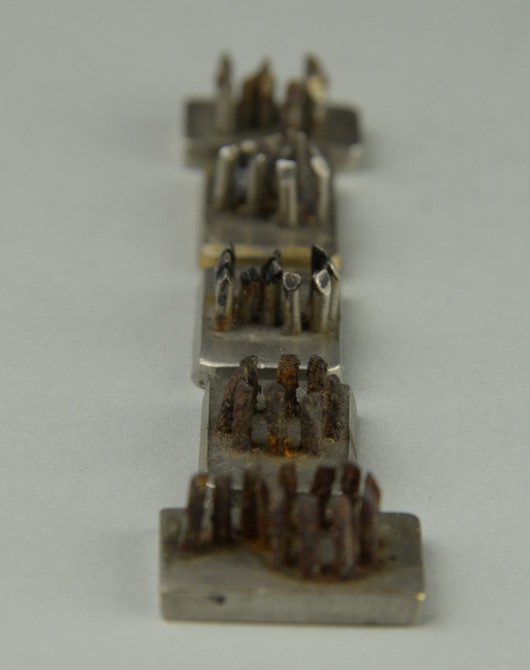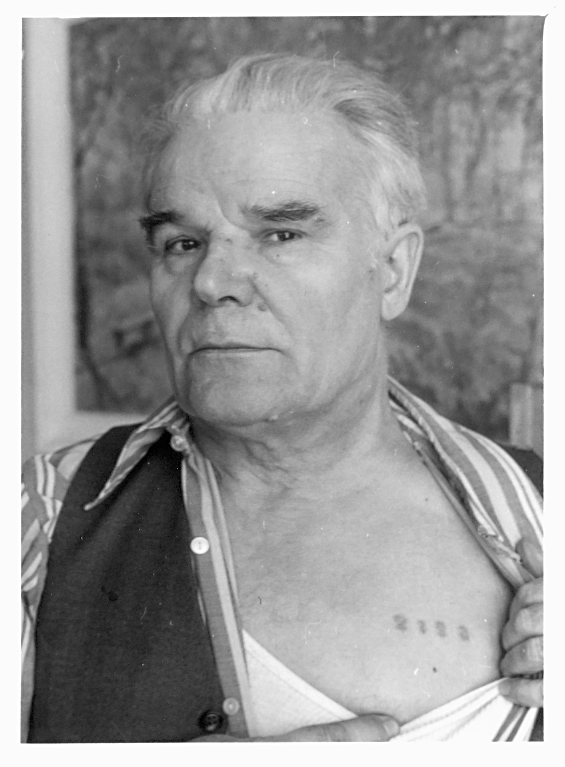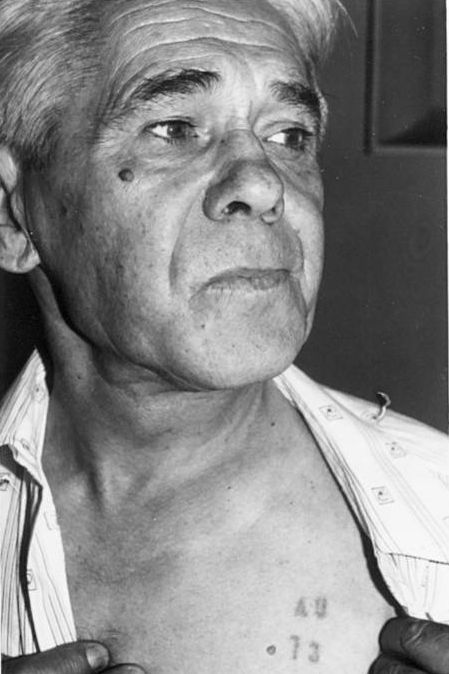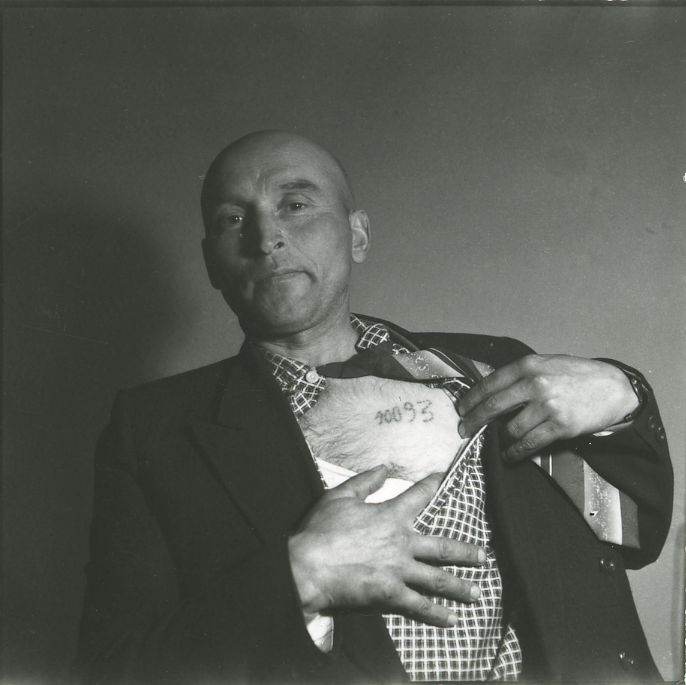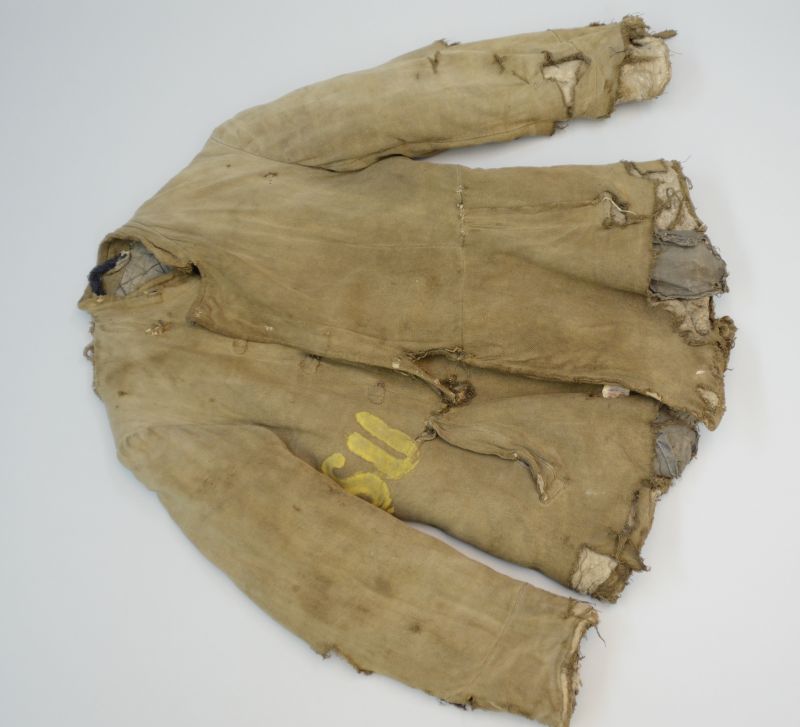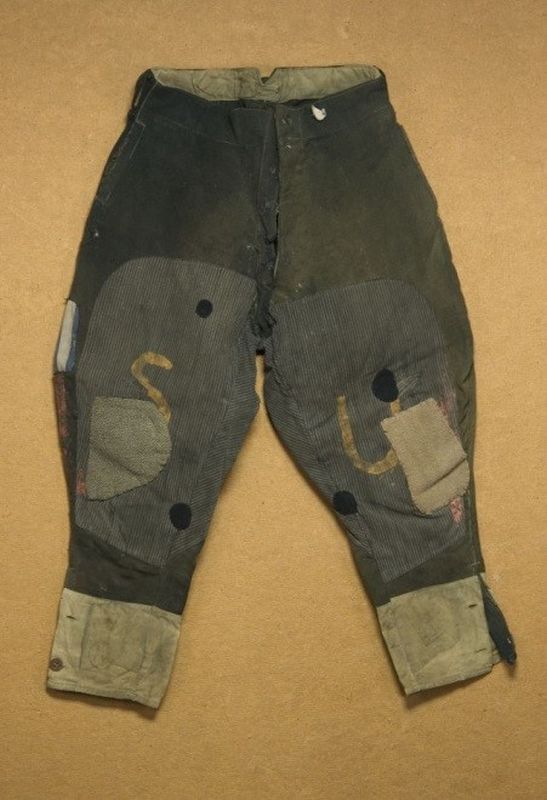In October 1941, six mass transports of Soviet prisoners of war arrived in Auschwitz Concentration Camp. Once out of the railcars, they were ushered to the aforementioned “reception point”. There, even though the days were exceptionally cold, they had to undress fully and undergo disinfection by submerging in the vats. They were also given rations of soup there. After the formation of columns of 100 persons each, they were marched naked to the camp. In the meantime, their uniforms were taken for disinfection and returned only after a certain time. Letters SU standing for Sowjetunion (Soviet Union) were painted on their shirts and trousers in yellow.
The first transport arrived from Stalag Neuhammer on 7 October 1941. The following ones arrived from the same stalag on 9, 14 and 19 October. The next two arrived from stalag Lamsdorf on 20 and 25 October. Altogether, nearly 10,000 prisoners of war were deported in the six transports. Moreover, 78 prisoners of war were probably transported on 15 November, and another 96 on 8 February 1942. They were the last two groups transported to the mother camp. Beginning from 2 April 1942 the following ones were sent to Birkenau.
Soon after arriving in the camp, the POWs were registered on the ground floor of Block 24. The documents to be filled in included the inmates’ personal sheets (Häftlingspersonalbogen), containing plenty of detailed information, and also POW personal cards, usually containing only their basic personal data.
During the registration, the prisoners of war wore the Erkennungsmarke (identification tags) with the numbers assigned to them still in the prisoner of war camps around the neck. Yet it happened that some of the arrivals did not have one, while others had two or three, which made their identification difficult. This was the reason why they were given new numbers in a series run especially for them. The numbers were stamped on stripes of material that the POWs had to sew onto the left side of the shirt at chest height and the right trouser leg of the uniforms they were issued. Sometimes, however, after a time, the POWs exchanged their worn off shirt and trousers for the clothing of deceased colleagues, if it was in a better condition. This provided another obstacle in determining their identity and made their registering more difficult. So the camp administration decided to tattoo the numbers. The POWs were tattooed on the left breast with a stamp that consisted of metal punches with digits composed of short needles arranged into the desired order. Later ink was rubbed with a rag into the wound that resulted from being stricken with the punch. Beginning with the spring of 1942, tattoos were made with a needle dipped in ink fit into a holder. The Soviet POWs were the first group in Auschwitz to have prisoner numbers tattooed.
In the camp documentation, they were frequently referred to as Russe (Russian) or by acronyms RKG, RK, and R standing for Russischer Kriegsgefangene (Russian prisoner of war). Despite these terms, Russians only formed a group, although a numerous one, of Red Army soldiers imprisoned at Auschwitz. There were also Ukrainians, Belarusians, citizens of the countries of the Caucasus and Central Asia, as well as Poles from the eastern regions of Poland occupied by the Soviet Union since 1939.

